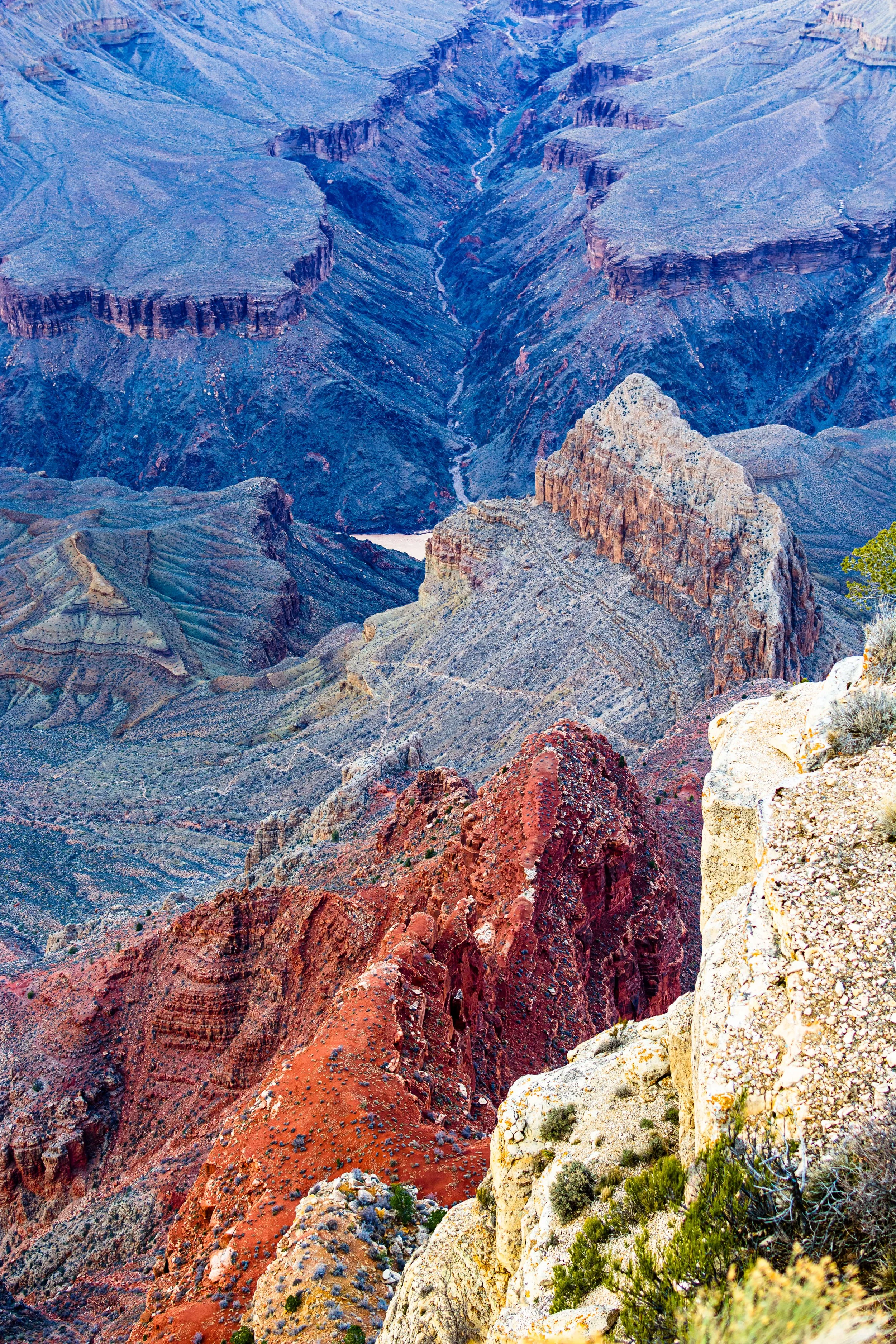What Do You Suppose is the Patience of Nature?
We walked through eons of history one morning.
The Grand Canyon is a study of the ancient history of the region. The layers of stone chiseled by the Colorado River stood magnificent in the early morning sun. The Vishnu schist, the Tonto Plain, the red rock of the Colorado Plateau revealed themselves to us, one by one.
How long did it take the river to carve this many layers of stone?
We walked along in silence in the cool air of morning, readying ourselves for the morning ahead. We were climbing out from Phantom Ranch at the bottom of the canyon. We started early because the sun would soon bake us as the canyon walls heated up like an oven. The hike out was going to take all the patience we could summon, all the strength of character too. Oh, and did I mention quite a measure of physical fitness! We were told the way to go was to leave early, keep climbing, drink lots of water, and be out of the canyon by ten o’clock in the morning when the October heat would become oppressive.
The first set of switchbacks were easy. The second set: not bad but getting harder. The third set was more rigorous. By the fourth set, we were taking bets on whether we would make it out of the canyon by ten o’clock.
I was feeling doubtful, hopeful that the next leg of the journey would be easier, pensive about how far we had to go. We walked another three sets of switchbacks only to find that we had barely left the Tonto Plain. The air was cooler here, and we were shaded. We stopped for a drink of water, a snack, a moment’s rest. We asked the hikers coming down how long it had taken them to hike down. We had quite a way to go! The views were spectacular. We trudged on. More switchbacks, more water, more switchbacks, more water, more switchbacks, more water. The sun was higher in the sky now, beginning to heat the walls of rock beside us. We were thirsty, hot, tired, and anxious to get to the top. Massive walls of red sandstone loomed above us. We were ready to be done with this hike, but this hike was not done with us. We were going to need a lot of patience to finish this hike. Layer after layer of the canyon fell farther below us. At long last we reached the one thousand foot mark. We just had to go one thousand more vertical feet to reach the top of the canyon.
The remaining trail up had some steep switchbacks.
Our legs were heavy as lead by now. Our heads were in a fog. Intention was solidified by one remaining goal: to reach the top of the canyon.
Our goal fought with all its might against the ravages of blinding fatigue. My legs began to burn as they drew upon every last ounce of inspiration through that last layer of Kaibab limestone. Burned more because I had to keep going, because I had to walk through the burning to get to the top. Through a burning that intensified with each step. Through footstep after footfall. Five and a half hours after leaving Phantom Ranch, five and a half hours that seemed like an eternity, we hiked the last step out of the canyon. Patience had to be our guide.
The Grand Canyon required fifteen million years to carve. Earth has a lot of patience measured in eons rather than hours. Various species of dinosaurs lived on Earth for 165 to 177 million years. The Alps began forming between 25 and 30 million years ago and are still being uplifted. The Mississippi River began flowing to the Mississippi Delta 70 million years ago when dinosaurs still roamed Earth, and it still flows today. The Great Lakes formed at the end of the Last Glacial period about 14,000 years ago. With great patience is Earth formed and watered. Lack of patience, on the other hand, creates destruction in its wake. Giving Earth a caring chance requires patience because Nature needs time to grow and heal.
Climbing out of the big hole we have created on Earth is going to take time and patience. This is how it is with any major change. Patience with ourselves is a prerequisite. Patience with a healing process is another: the healing process includes the Earth, ourselves, and others. Patience is a never ending process. Where we lack patience, we make poorer decisions and flit from one decision to the next without taking time to think through directions. The same is true where societies lack patience. We need to work in sync with Nature’s healing processes, so that we are working in concert with Nature and not against her or ourselves. When we embark upon a change process, great patience is required at every level to gain the 35,000 foot level perspective.







